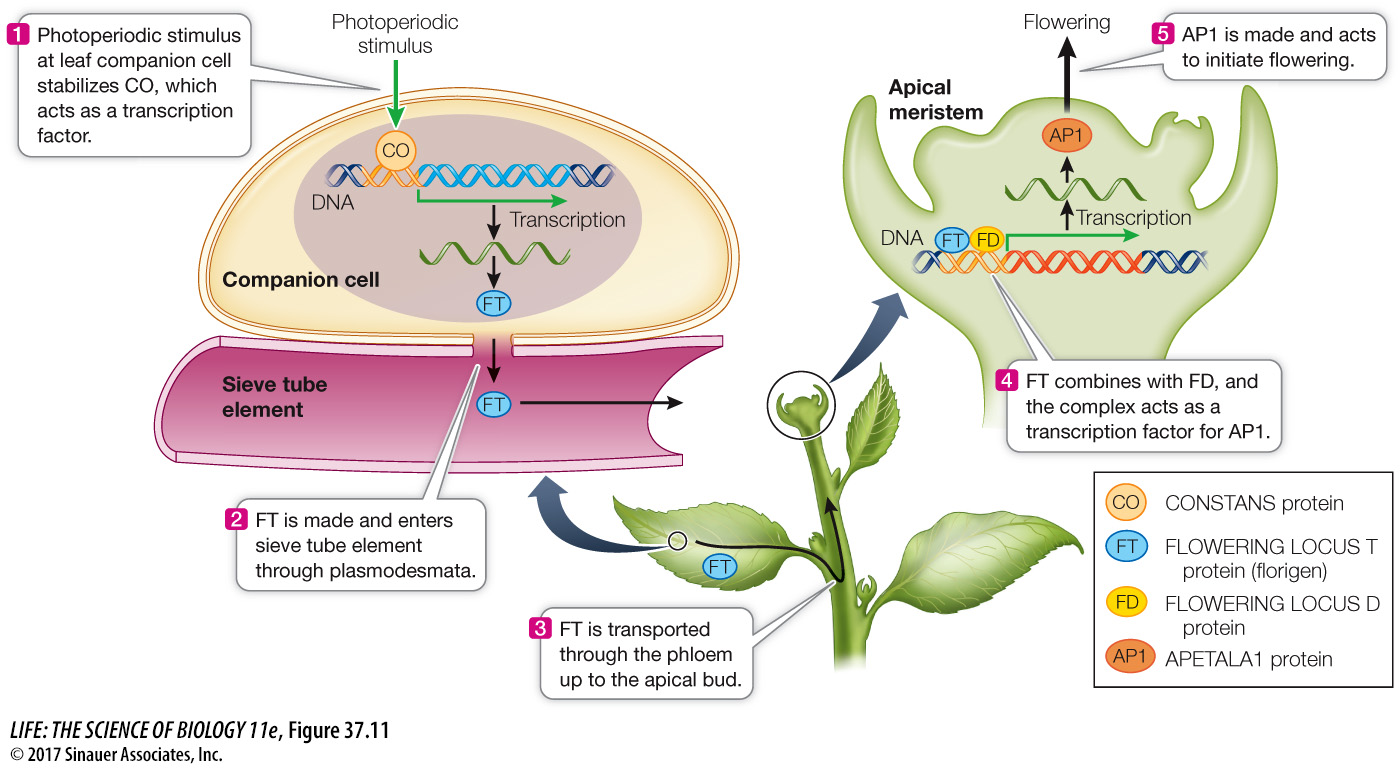Florigen is a small protein
The characterization of florigen was made possible by genetic and molecular studies of the model plant Arabidopsis. Three genes are involved in the signaling response for flowering (Figure 37.11).

FT (FLOWERING LOCUS T) codes for florigen. FT is a small (20 kilodalton [kDa]) protein that can travel through plasmodesmata. FT is synthesized in the phloem companion cells of the leaf and then diffuses into the adjacent sieve elements. It then is carried through the phloem to the apical meristem. If the FT gene is coupled to an active promoter and expressed at high levels in the shoot meristem, flowering is induced even in the absence of an appropriate photoperiodic stimulus.
CO (CONSTANS) codes for the transcription factor that activates the synthesis of FT. As described above, CO expression follows a circadian rhythm, and stabilization of the CO protein by photoreceptors allows it to function. Like FT, CO is expressed in leaf companion cells. If CO is experimentally overexpressed in the leaf, flowering is induced. However, if CO is overexpressed in the apical meristem, flowering is not induced, indicating that CO functions in the leaf.
798
FD (FLOWERING LOCUS D) encodes a protein that binds to FT protein when it arrives in the apical meristem. The FD protein is a transcription factor that, when bound to FT, activates promoters for meristem identity genes, such as APETALA1 (see Figure 37.11). The expression of FD primes meristem cells to change from a vegetative fate to a reproductive fate once FT arrives.
Before FT was isolated, grafting experiments indicated that many different plant species could be induced to flower by the same chemical signal. Results of molecular experiments confirmed that the FT gene is involved in photoperiod signaling in many species:
Transgenic plants (e.g., tobacco and tomato) that express the Arabidopsis FT gene at high levels flower regardless of day length.
Transgenic Arabidopsis plants that express FT homologs from other plants (e.g., rice and tomato) flower regardless of day length.
How is this molecular system related to the photoperiodic stimulus? This has been described in the long-
Low Pr → more CO → more transcription of FT → flowering
We have considered the photoperiodic regulation of flowering, from photoreceptors in the leaf to florigen that travels from the induced leaf to the sites of flower formation. In some plants, however, flowering is induced by other stimuli. These additional stimuli can function with photoperiodism or independently of it.